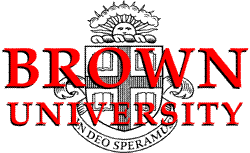






|
|

|
| This page provides information regarding ATR effort under a DARPA / ONR contract. The group includes Raphi Coifman from Yale, Quyen Huynh from CSS, Nathan Intrator (P.I.) from Brown and Tel-Aviv University and Truong Nguyen from Boston University. |
A recent
report describes some effort in wavelet denoising of these images.
Some images can be viewd and down-loaded
here.
A preliminary
report appeared in SPIE-97. It describes some effort in wavelet
denoising of these images.
Presentations
July 2001:
PowerPoint Slides (Updated July 23, 01)
April 2001:
Supporting Material
Supporting slides
November 2000:
Waveform Design and Decomposition for Biosonar
Past Work
Aug/Sep 2000:
Broad Band Sonar
Quad Chart Summary
April 2000:
Presentation
html version
Poster
Supporting Material: 1
2
June 1999:
Executive Summary
Summary Slide
Progress Report
Publications
Theory
Methodology
Dolphin Sonar links
Projects
Related sites
![]()
Side Scan Sonar Mine Detection
The current data base consists of a 60-image set from a side-scan
sonar (SSS0) collected at the Naval Surface Warfare Center (NSWC).
They are encoded as 8-bit gray scale images, 1024 range cells by 511
cross-range cells. The 60 images contain 33 targets; some contain more
than one target while others contain no targets. Non-target objects
which look as targets appear throughout the images. A typical
mine-like target consists of a strong highlight on its left side and a
long shadow down range on its right side. Unfortunately the presence
of clutter can mask this structure.
To optain the side-scan sonar or the backscatter data please
contact Dr. Quyen Huynh 850-234-4158, or
Dr. Edward Linsenmeyer 850-234-4161.
![]()
Back Scatter Sonar
This application involves an active backscatter data set of mine-like
objects. The data was collected at the Naval Surface Warfare Center
(NSWC) by Gerald Dobeck. The task is to distinguish between man-made
and non-man-made objects. There are six objects in the data:
metal cylinder, cone-shaped
plastic object, water-filled barrel, limestone rock,
granite rock, and a water-logged wooden log.
The data-set contained seven different frequency bands, however in
this preliminary study, only one frequency band, an FM sweep between
20 to 60 kHz was used.
The targets were suspended in a large water tank, while cylindrical
objects were suspended horizontally. Measurements were collected in 5
degree increments on a rotating target around a vertical axis.
Every second measurement was used for testing, thus the train and test
data were interleaved and both included measurements at 10 degree
increments.
![]()